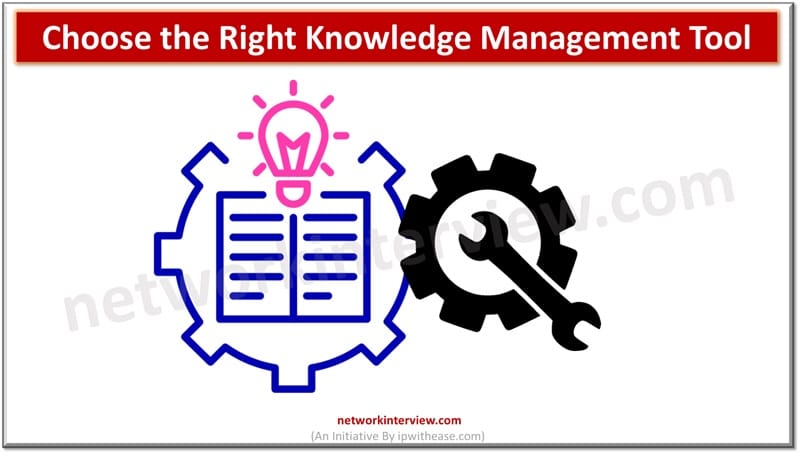
How to Choose the Right Knowledge Management Tool for Your Business
The arena of business is ever-evolving, and in the current digital age, information is as crucial as currency. With the burgeoning amount of data that businesses generate and acquire, managing this knowledge effectively becomes imperative. Knowledge management systems can help organizations store, share, and manage information, leading to an increase in efficiency and competitive advantage. To select the most suitable knowledge management tool for your business, it’s important to approach this decision methodically. Below, we explore key steps in the journey towards integrating the right knowledge management system into your business.
Analyzing Your Business’s Knowledge Management Needs

Before diving into the selection of a tool, it is crucial to analyze your business’s unique requirements. This involves understanding the types of knowledge your business deals with—be it tacit knowledge that resides in the minds of your employees or explicit knowledge that can be documented and archived.
Consider the gaps in your current system: What knowledge is not being captured? Where are the bottlenecks in information flow? Identifying these areas can help you outline the specific functionalities you need in a knowledge management tool. Such functionalities might include advanced search capabilities, collaboration features, or integration with existing systems.
Additionally, factor in the growth trajectory of your company. How scalable do you need your knowledge management tool to be? It should not only meet your present needs but also adapt to future expansions. Aspects such as the anticipated number of users, data volume, and the complexity of the organizational hierarchy should influence your decision.
Key Features to Look for in a Knowledge Management Tool
With a clear understanding of your business needs, you can begin to pinpoint the essential features of an effective knowledge management tool.
- Searchability is undoubtedly vital; the ability to quickly find relevant information is the linchpin of efficient knowledge management. Look for advanced search functionalities that can filter through various formats and types of data.
- Collaboration features are also becoming increasingly important, as they nurture the exchange of ideas and information among team members. A tool that facilitates discussions, document sharing, and collective content development serves as a crucible for innovation within the firm.
- Data security should not be overlooked either, given the sensitive nature of many knowledge assets. Ensure the tool you select offers robust security measures to guard against unauthorized access and data breaches. The integrity and privacy of your business knowledge are of paramount importance.
Evaluating Knowledge Management Tool Vendors and User Reviews
When you have a clear idea of the desired features, it is time to consider the vendors offering knowledge management solutions. Reputation and reliability should be at the forefront of your assessment. A provider with a proven track record and exceptional customer support is likely to yield a positive experience.
- User reviews and testimonials can provide invaluable insight into the real-world performance and usability of a tool. Look for feedback concerning the tool’s ease of use, flexibility, and customer service. Pay special attention to reviews from businesses similar to yours in size and industry, as they are more likely to reflect your own user experience.
- Another crucial factor is the total cost of ownership. This includes not just the initial purchase price or subscription fees, but also any additional costs related to implementation, training, and maintenance. Transparent pricing models and clear communication about future updates or scaling costs will assist in avoiding unexpected expenses down the line.
Implementing Your Knowledge Management Tool for Maximum Benefit

Once you have selected your knowledge management tool, thoughtful implementation is key to its success. Begin by clearly establishing the objectives and expectations with all stakeholders involved. This ensures that everyone is on the same page about the purpose and use of the new system.
Employee training is another major variable that influences the effectiveness of the knowledge management tool. A system is only as good as the people using it, so make sure to provide comprehensive training and resources to encourage proper adoption and proficiency.
After implementation, monitor the usage and effectiveness regularly. Gather feedback from users to understand any challenges or resistance they might be facing. Continuous improvement should be a part of the knowledge management process, with periodic evaluations leading to adjustments and enhancements.
Lastly, celebrate the wins. When the knowledge management tool leads to visible improvements in productivity or information sharing, share these successes with the team. Highlighting these benefits can further encourage active participation and acknowledge the collective efforts made.
Overall, selecting the right knowledge management tool involves understanding your organization’s needs, assessing the right features, carefully evaluating vendors and their reputations, and thoughtfully implementing the chosen solution. By adhering to this strategic approach, you position your business to leverage knowledge efficiently, foster innovation, and maintain a competitive edge in the industry.



